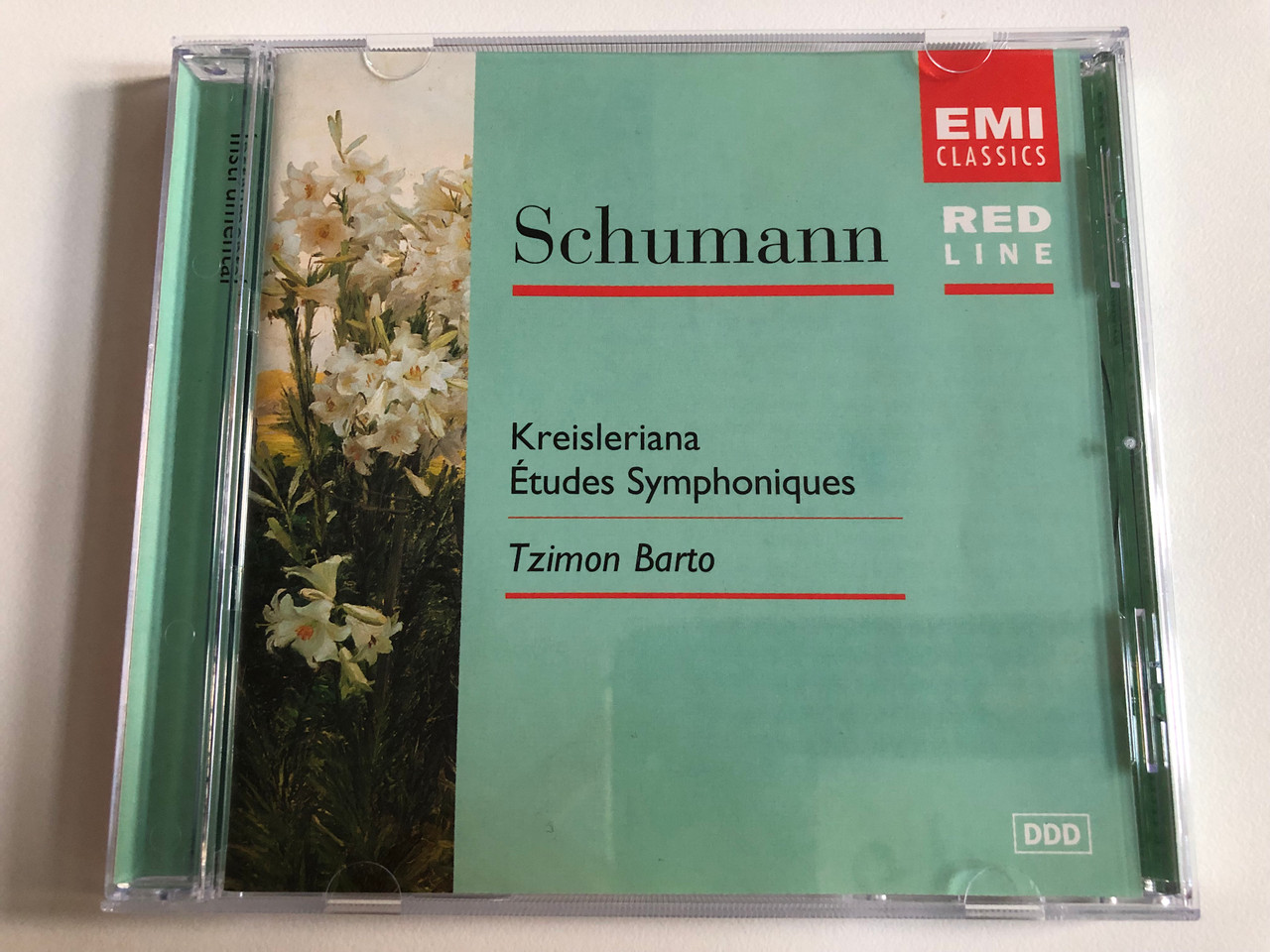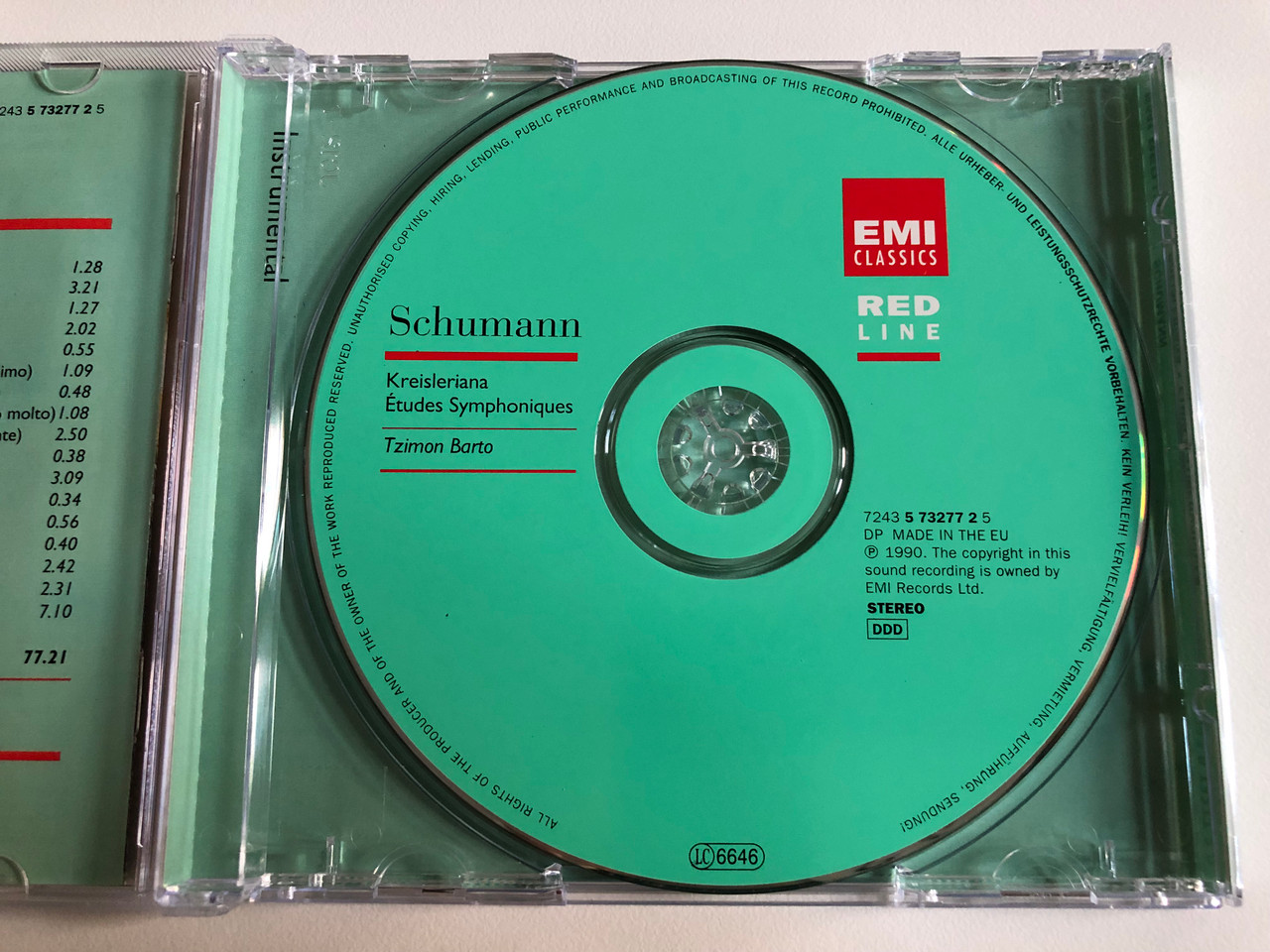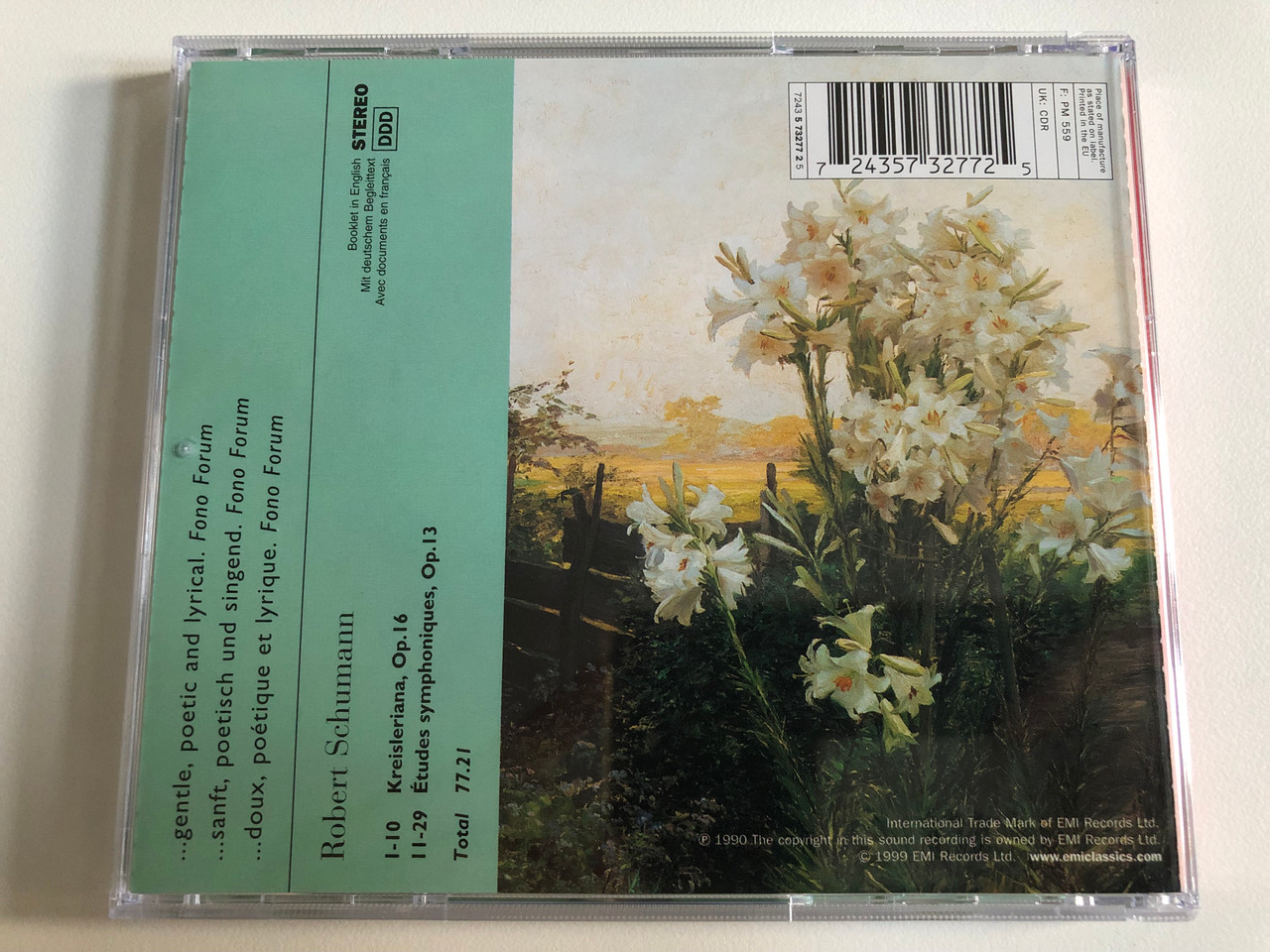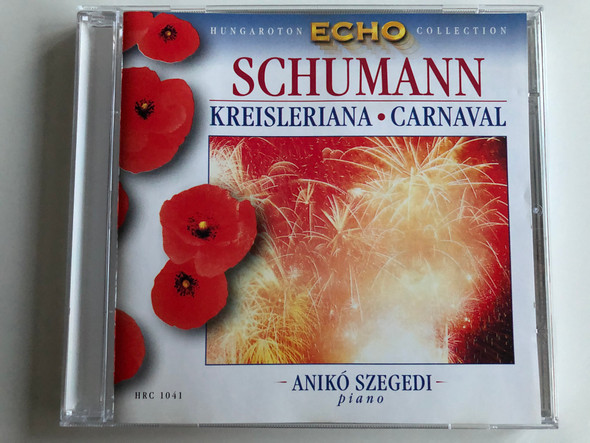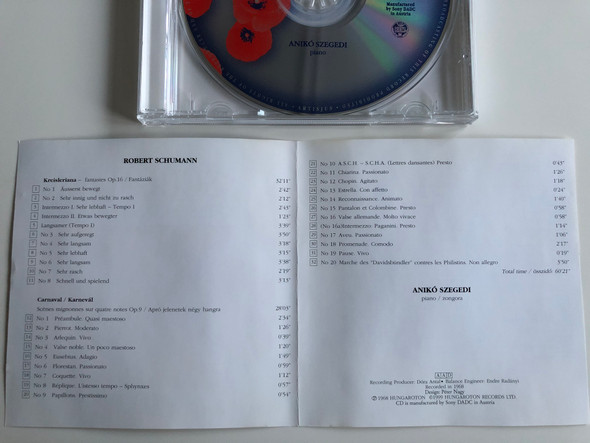Description
Schumann: Kreisleriana, Etudes Symphoniques / Tzimon Barto / Red Line / EMI Classics Audio CD 1999 Stereo
UPC 724357327725
Kreisleriana, Op. 16, is a composition in eight movements by Robert Schumann for solo piano, subtitled Phantasien für das Pianoforte. Schumann claimed to have written in only four days in April 1838 and a revised version appeared in 1850. The work was dedicated to Frédéric Chopin, but when a copy was sent to the Polish composer, "he commented favorably only on the design of the title page".
Kreisleriana is a very dramatic work and is viewed by some critics as one of Schumann's finest compositions. In 1839, soon after publishing it, Schumann called it in a letter "my favourite work," remarking that "The title conveys nothing to any but Germans. Kreisler is one of E. T. A. Hoffmann's creations, an eccentric, wild, and witty conductor." In 1843, when he had moved from writing for solo piano to much larger works, in particular Paradise and the Peri, he still listed it as one of his best piano works.
The work's title was inspired by the character of Johannes Kreisler from works of E. T. A. Hoffmann. Like the kaleidoscopic Kreisler, each number has multiple contrasting sections, resembling the imaginary musician's manic depression, and recalling Schumann's own "Florestan" and "Eusebius," the two characters Schumann used to indicate his own contrasting impulsive and dreamy sides. Johannes Kreisler appears in several books by Hoffmann, including Kater Murr and most notably in the Kreisleriana section of Fantasiestücke in Callots Manier, published in 1814.
The Symphonic Etudes (French: Études Symphoniques), Op. 13, is a set of études for solo piano by Robert Schumann. It began in 1834 as a theme and sixteen variations on a theme by Baron von Fricken, plus a further variation on an entirely different theme by Heinrich Marschner.
Tracklist:
Kreisleriana, Op.16
1 Äusserst bewegt 2.55
2 Sehr innig und nicht zu rasch 2.54
3 Intermezzo I (Sehr lebhaft) —
Erstes tempo 2.56
4 Intermezzo II (Etwas bewegter) —
Langsamer (Erstes tempo) — Adagio —
Erstes tempo 5.04
5 fil Sehr aufgeregt 5.40
6 IV Sehr langsam 4.09
7 V Sehr lebhaft 3.53
8 VI Sehr langsam 5.56
9 VII Sehr rasch 2.37
10 VIII Schnell und spielend 4.29
Etudes symphoniques, Op. 13
11 Thema (Andante) 1.36
12 Etude | (Variation I )(Un poco pili vivo) 1.26
13 Posthumous Variation III 1.28
14 Etude II (Variation II) 3.21
15 Etude III (Vivace) 1.27
16 Posthumous Variation 2.02
17 Etude IV (Variation III) 0.55
18 Etude V (Variation IV) (Vivacissimo) 1.09
19 Etude VI (Variation V) (Agitato) 0.48
20 Etude VII (Variation VI) (Allegro molto) 1.08
21 Etude VIII (Variation VII) (Andante) 2.50
22 Etude IX (Presto possibile) 0.38
23 Posthumous Variation IV 3.09
24 Etude X (Variation VIII) (Allegro) 0.34
25 Posthumous Variation V 0.56
26 Etude X (Variation VIII) (da capo) 0.40
27 Etude XI (Variation IX) (Andante) 2.42
28 Posthumous Variation II 2.31
29 Etude XII (Allegro brillante) 7.10














